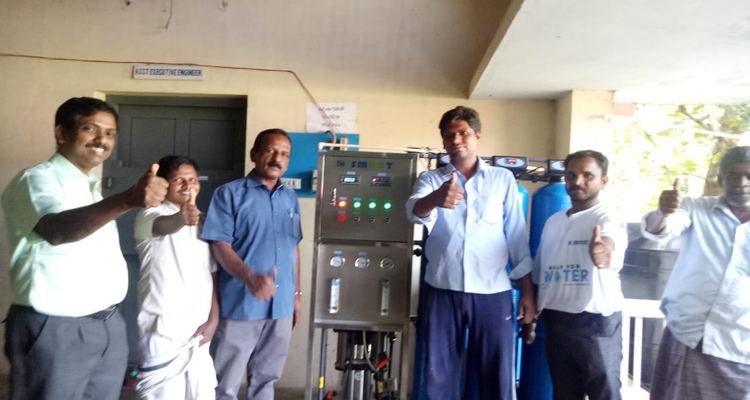One India - Water We Are, Water We Share

Whenever there is decay of righteousness, O Bharata,
And there is exaltation of unrighteousness, then I Myself come forth;
For the protection of the good, for the destruction of evil-doers,
For the sake of firmly establishing righteousness, I am born from age to age.
The Kerala floods have galvanized the country into action. The images of devastation have awakened the inherent brotherhood among Indians of all strata. Just when the future of this great civilization is questioned, over random instances of hatred, there comes forth a wave of nationalism that buries all doubts.
The last few weeks has been overwhelming for the people in the frontlines. Those affected by the floods and those struggling to reach the marooned and provide basic humanitarian aid have experienced unprecedented challenges. The Walk For Water, Igniting Minds and Smaat India team was similarly overwhelmed by the challenges, but quickly settled down to provide succor to the people on a war-footing.
One of the priority areas in the aftermath of the tragedy is the provision of potable water to the 300000 inmates of the 1740 relief camps. The Government of Telengana requested for 50 water treatment plants for the worst affected areas and an Indian Air Force aircraft was mobilized for the team led by M. Karunakar Reddy. The team spread out across the devastated landscape for installation of the water treatment plants and reached the relief camps located in Pathanamthitta, Alappuzha, Kottayam, Ernakulam, Thrissur, Malappuram and Wayanad districts.
The ‘decay of righteousness’ as elucidated in the Bhagavad Gita, Chapter 4, Verse: 7-8, brings forth the forces of reconciliation. The region once classified as Ecologically-Sensitive Zones was torn apart by extensive quarrying, rampant construction and illegal forest land acquisition. In spite of knowledge of the potential environmental impacts, economic gains were prioritized.
It often takes a massive humanitarian tragedy, for Indians to come together; we are a nation that embraces unity in adversity. Governments and private businesses have rallied to expedite the relief process, but it is the contribution of common people that needs to be acknowledged. Around the country, civil society groups have rallied to mobilize private aid to be sent to the people of Kerala and India has prevailed once again.
RituRaj Phukan
Videos
Videos
Videos
@ignitingmindsmagazine
@IgnitingMindsin
Top Stories
- Dedicated to the Sparrows, Forests and Water
- The United Nations Decade of Ecosystem Restoration
- How technology in agribusiness affects climate change, a concrete solution.
- Restless Youth Seek Climate Action
- Telangana Jagruthi International Youth Leadership Conference 18,19,20th January 2019
- Sports for Climate Action Framework launched at COP24
- COP24: One Week of Misgivings
Videos
Businesses
- Can Home Remedies Increase Your Height.
- Success Comes When We Make Innovation a Habit
- Do You Want to Be a Green Entrepreneur?
- Igniting Minds Official Web Portal Launched in New Delhi.
- Strive To Drive The Life
- Do Mobile Apps Facilitate Small Businessmen?
- Water Conservation, Preservation and Restoration. A Global Engineering Challenge.